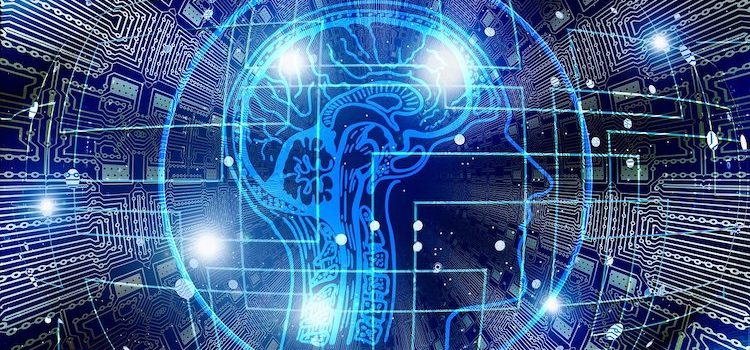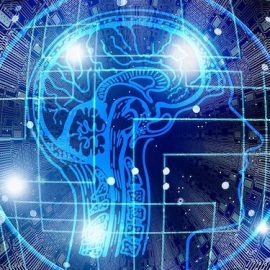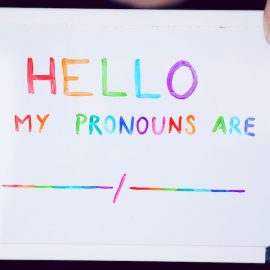
What’s a digital brain? Will the concept ever become a reality? Can the reality be avoided?
Ray Kurzweil addresses artificial intelligence and the human brain, arguing that the path to strong AI requires learning how the human brain works and duplicating its cognitive functions electronically. Our accelerating progress in computing power makes reproducing brain functions easier every year.
Keep reading to understand why a digital brain is not only possible but might be inevitable.
Artificial Intelligence and the Human Brain
In Kurzweil’s discussion of artificial intelligence and the human brain, he covers advances in brain research, how they apply to computation models, and how, if computers can simulate brains, you may one day be able to upload your whole mind into the digital world.
Historically, the medical tools we’ve used to analyze and understand the brain were crude. But, like all other modern technology, they’re improving at an accelerated pace. It’s now possible to image a functioning brain down to the level of individual neurons. Kurzweil says that computer models of the brain are likewise improving at a phenomenal rate. While the brain is extremely complex with trillions of neural connections, there is a lot of built-in redundancy. An effective computer model of a brain doesn’t have to simulate every neuron firing, and we’ve already made remarkable progress modeling some of the brain’s specific regions.
(Shortform note: Kurzweil’s hope for a fully functional simulation of the human brain was attempted by the Human Brain Project, which ran from 2013 to 2023. It fell short of its goal of a digital model of the entire brain, but it was able to model over 200 brain regions and made discoveries that are used to treat neurological disorders and injuries. Another byproduct of the Human Brain Project is EBRAINS, an open digital research network devoted to furthering neuroscience and brain studies using the latest computer tools and data.)
Kurzweil admits that the brain’s major advantage over digital computers is that it is massively parallel—it sets countless neural pathways to solving any problem all at the same time, as opposed to the more linear approach taken by traditional computing. This more than makes up for neurons’ relatively slow chemical transmission of data. However, the hardware for fast parallel processing is rapidly becoming available for digital computers. Another advantage of the human brain is that via neuroplasticity, it can rearrange its connections and adapt, something that physical computers cannot do. Nevertheless, Kurzweil insists that the brain’s ability to adapt and reorder itself can be addressed in the realm of software if not hardware.
| Simulating the Brain Kurzweil’s prediction that future computers would copy human brain functions has held true, at least in the field of computer research. Engineers are now designing computers with spiking neural networks (SNNs), which mimic how neurons interact rather than relying on traditional computer architectures. Meanwhile, parallel processing analogous to the brain has allowed machine learning and “big data” analysis to advance by leaps and bounds. Recent work has resulted in the development of Neural Processing Units, a new type of computer processor that allows SNNs to be built at larger scales. The plasticity of brain cells is harder to reproduce, but researchers have developed synaptic transistors that mimic neurons’ ability to change and adapt. While much of how the brain works is still unknown, scientists hope that computer hardware that functions like neurons will unlock further progress in brain research. |
Mapping the Brain
One thing to remember is that the brain isn’t perfect—it evolved to function just well enough for our primitive ancestors to survive. Once we can digitally replicate the brain, we’ll also be able to improve its design, and once our computing power is great enough, Kurzweil believes that it will become possible to scan and upload the memories and specific neural connections of a person’s mind into a digital self. Though this may sound like pure science fiction, the level of computing necessary should be readily available in the 2030s, so creating a digital backup of yourself will only be a question of software and the state of brain-scanning technology.
(Shortform note: Because making a digital backup of your mind offers potential immortality, Russian entrepreneur Dmitry Itskov founded the 2045 Initiative to fund research on digital mind uploads and robot avatars to replace human bodies. Neuroscientist Ken Hayworth of the Brain Preservation Foundation agrees that uploading consciousness should be possible, if beyond the reach of current technology. In 2016, Hayworth predicted that it would take two years to map the brain of a fly, much less a more complicated organism. However, Kurzweil’s theory of exponential growth may already have supporting evidence because, in 2023, researchers mapped the entire brain of a mouse at a resolution 1,000 times greater than a normal MRI.)
Whether or not your digital self is still “you” will pose both philosophical and legal conundrums. Our entire legal system revolves around the rights of living, conscious beings, so the matter of whether a digital being can be conscious will become much more than a hypothetical issue. However, Kurzweil suggests that as we work through the legal ramifications, our transition from biological to digital entities won’t be abrupt. Instead, it will be a slow process as we gradually augment our physical brains with more and more digital capabilities, until the center of our consciousness gradually slides from the physical world into the electronic realm.
| Consciousness and Identity Whether you believe a digital copy of yourself would still be “you” depends greatly on your conceptions of consciousness and identity. In Flow, Mihaly Csikszentmihalyi defines consciousness as a mental state of awareness in which we perceive, process, order, and act on sensory input and information—something it’s not hard to imagine computers doing. However, in Homo Deus, Yuval Noah Harari defines consciousness as the combination of thoughts, emotions, and sensations that create your subjective experience. It’s the subjective nature of the latter definition that calls the possibility of AI consciousness into question. In Waking Up, Sam Harris points out that because consciousness is a subjective experience, it can only be studied from the inside. In other words, science can objectively study the products of consciousness, but not consciousness itself. Therefore, if a computer claimed to be conscious, we’d simply have to decide whether to take it at its word. Whether a digital copy of your mind is still “you” may be a moot point because Harris argues that your sense of self is merely an illusion created by your mental processes. The sense that you’re an incorporeal being sitting behind the steering wheel of your brain may simply be a figment of your brain’s functions. In Harris’s view, a digital copy of yourself would not be “you” at all because there’s no “you” to begin with— you’re just a continuity of conscious awareness. |






